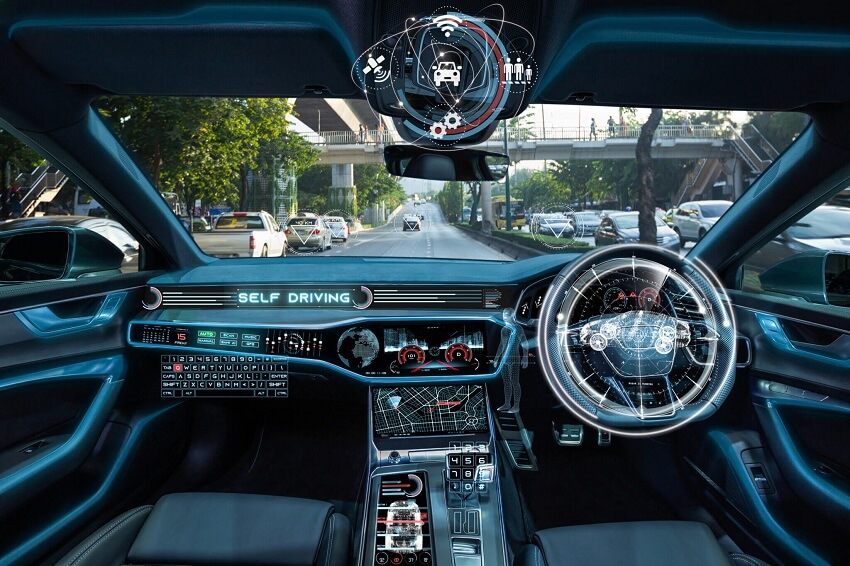by Nir Elron
The connected cars market keeps growing. With 192 million connected cars on the road today, accounting for about 13% of the 1.45 billion automobiles in the world, forecasts expect that by 2030 up to 95% of new vehicles sold globally will have embedded internet connectivity. Experts talk of connected services as another revolution in the automotive industry along with electric vehicles.
Connectivity is, beyond doubt, one of the most important factors that will define the development of cars in the coming years. It is a part of the so-called CASE or ACES, depending on how you put together connectivity, autonomous driving, shared mobility and electrification, trends that have a significant impact on the automotive sector. Massive amounts of sensor data in real-time, autonomous technologies, over-the-air updates, and third-party services all require high-performance car connectivity, while safety regulations become more rigorous and demand more reliable mobile networks with very low latencies.
Of all technology trends that are considered the key drivers of innovation in the automotive industry, connectivity brings the widest range of use cases. It includes connected services such as payment solutions, usage-based insurance, remote diagnostics, fleet management, theft prevention, infotainment, emergency services from monitoring to crash notifications and connectivity-based technologies like smart traffic and vehicle-to-everything.
Although connectivity is an essential aspect of the car of the future, there are a number of technological advancements that are driven by connectivity and are impossible without it.
Opportunities
As automobiles gradually turn into moving electronic devices, connectivity plays a key role in the software defined vehicle (SDV) concept. It is essential for a wide range of services that fully connected cars of the future can provide, from advanced driver assistance systems (ADAS) to emergency assistance, navigation, and vehicle monitoring and tracking. The demand and offering on the connected services market are mutually interdependent. To keep up with growing demand, OEMs try to broaden their range of connected features, which in turn drives consumer expectations, especially with the rapid growth of autonomous vehicle functions and electric cars.
Advanced Diagnostics and Predictive Maintenance
Real-time data transfer is imperative for any company that tries to develop or implement various advanced diagnostics tools. Most of all, OEMs need it for gathering and analyzing data to prevent breakdowns and reduce callbacks by remotely adjusting vehicles settings and fixing problems with software updates. At the same time, in case some breakdowns still occur, this data can help optimize repair scheduling, workload and inventory management, and even increase revenues for OEMs and dealers by driving all repair traffic to OEM’s own channel. High-performance connectivity is crucial for remote monitoring and predictive maintenance.
Autonomous Vehicles
In-vehicle connectivity is of vital importance for self-driving cars, which generate gigabytes and terabytes of data every hour of driving depending on the autonomy level and use case, and some of the data has to be transmitted instantly. Highly automated vehicles use a wide variety of sensors (LiDARs, RADARs, ultrasonic and image sensors), and a range of processing subcomponents – all of which demand reliable, seamless connectivity for V2X functionality.
Connectivity is also essential at the preproduction stage and during the development and testing of autonomous stacks. With billions of dollars already spent on automated driving research and millions of miles driven, running a fleet of autonomous vehicles for development is expensive. The connectivity solutions used in the engineering phase can affect the cost that OEMs pay for every mile their self-driving cars travel while performing training, data gathering, verification and validation.
Infotainment Systems
Infotainment is often named as one of the two main pillars of automotive connectivity, the other being connected infrastructure. Not only are infotainment services important in developing customer loyalty via personalized in-car experience, but they also become a major source of additional revenue stream for OEMs. It gives the manufacturers access to a huge amount of data that can be monetized, for example, via various innovative advertisements.
Connected Infrastructure
Bringing connected vehicles services to life requires not only vehicles themselves but the whole ecosystem that includes next generation infrastructure capable of communicating with connected cars. The importance of it becomes apparent when we think about enhanced safety functions, relaying on wireless connectivity in order to “sense” what’s behind the corner or the curve, or electric vehicles and “range anxiety” problems (the fear of running out of battery before reaching a charging station), or consider the growing number of smart cities IoT connections and the way they could help make driving safer and easier by transmitting information on detours or road works. As both smart infrastructure and connected vehicle services continue to evolve, there will be more examples of the value they can drive together. But all V2I cases, from charging stations informing EV drivers whether they have enough range left and how long is the wait in line or parking meters sending signals to show parking space availability, are impossible without in-vehicle connectivity.

Challenges
However, various players in the automotive market – be it carmakers or developers of the operating systems and services – still may face connectivity challenges that withhold the adoption and advancement of certain innovative technologies:
Latency
With all the apps and special features that are being added to the car, latency becomes more and more important. A good example here would be adding ChatGPT to the in-car assistant system, which some major car manufacturers are working on. Apart from voice assistance, it can improve path planning and positioning, interaction with the in-vehicle infotainment systems, reduce driver distraction, and even significantly contribute to advanced autonomous driving features including V2V, V2I and V2X, but all that would require low latency.
Yet when it comes to connected cars, poor user experience is not the worst thing that an inconsistent network performance can lead to. Latency may affect not only infotainment system, but also over-the-air (OTA) drive control updates that impact the ability of a vehicle to operate safely and efficiently. All major automotive OEMs have models that support firmware and software OTA updates and may have problems with it due to high latency.
Real-time decision capabilities are also critically dependent on latency. In any advanced driver assistance system latency in computing the car position or predicting velocity is critical to overall safety. Moreover, as cars become increasingly autonomous, delays and errors in data transmission even from one of many sensors may affect the whole picture and have disastrous consequences for anyone in or near the vehicle.
Coverage
Continuous coverage is one of the most critical factors for mostly the same reason. Losing connectivity means no streaming video, no map updates and no extra services – but most importantly it may significantly reduce the level of safety. Weak cellular range is still considered to be one of the biggest connectivity challenges today. Even though cellular connectivity is the best option for vehicles for its ubiquitous reach and global viability, each operator’s network inevitably has its weak spots.
Solving coverage issues could be a serious challenge for OEMs that ship connected cars to multiple markets. Getting continuous coverage in every region would require contracting with several mobile operators and physically changing SIMs, which is often impossible due to logistics and technical reasons. With the emergence of eSIM and its remote provisioning capabilities the latter problem was somewhat alleviated, but ensuring that the vehicle remains connected wherever it goes remains a pain point for car manufacturers.
Compliance with regulations
The regulations related issues may start at the manufacturing stage with solving the problem of having different SIMs for each country that OEMs ship vehicles to because of different legal requirements.
There also might be problems with data localization, as most countries have already enacted legislation on data sovereignty, and even some cities mandate that certain municipal data remain in their municipality. Depending on the regulations, there can be three types of localization, including IP localization (IP traffic stays in the country), soft localization (IMSI from a local carrier), and full localization (local SIM profile and connectivity services from a local carrier).
To top it all, there are restrictions that are specific to the automotive industry, like eCall, an automatic call that is generated from a sensor inside the vehicle to the nearest emergency-response network in case of a serious road accident, which is mandatory in some countries and may require a local SIM profile depending on location.
Looking for a solution
To keep up with the market growth, OEMs need a solution that would allow them to utilize the growth points and circumvent the problems related to connectivity.
The GSMA has recently published its SGP.32 IoT eSIM remote provisioning standard, which will help OEMs solve some of the problems with compliance by making over-the-air updates much easier. By eliminating the hurdles that extended time-to-market and made deployments cumbersome, it is sure to accelerate the connected car market growth, but it’s going to take some time to complete all specifications for devices, so the standard is likely to be available for use only in 2024.
There is also a promise of low-latency high-bandwidth connection from 5G cellular connectivity, though it’s far from being ubiquitous yet and the rate of its rollout is somewhat slower than initially expected. However, when it’s done, it will likely lead to expansion of service offerings and improved quality, and 5G’s fast, reliable connectivity is anticipated to be a driver for the connected car ecosystem’s success and pave the way for vehicle-to-everything applications and data-rich services such as autonomous driving.
Webbing’s solution
Nevertheless, all of the above doesn’t mean there isn’t a way for automotive manufacturers to solve their connectivity problems today.
Webbing offers a connectivity solution that ensures global access to reliable and high-quality internet, with low latency and the best of class coverage. It provides secure and continuous internet connection, delivering a streamlined, centralized, and scalable means of deploying, controlling and monitoring connected car fleets.
Webbing’s distributed core network with local breakouts, multiple network solution, and data server redundancy can provide OEMs connectivity stability and low latency. It also allows for all types of localization – from IP traffic that remains in the country to designated profiles for emergency calls, so it’s easy to comply with local and regional connectivity regulation requirements. Webbing’s partner network of over 600 mobile operators worldwide guarantees global coverage.
Our eSIM solution ensures failover connectivity with the capability of using multiple mobile carrier profiles, easily changing carriers at any time with zero integration, and an option to fall back from a failing profile to a different profile without any need to communicate with a remote server. Webbing’s eSIM is aligned with the GSMA SGP.32 IoT eSIM specification, which means it will be fully compatible with the new standard when it becomes ubiquitous.
Webbing also offers a centralized way to manage eSIMs throughout their lifecycle, making deployments future-proof and eliminating the problem of ever-changing legislation on connectivity and data protection. With our solutions, OEMs can set up business rules that would allow connected cars to change the serving carrier automatically under specific conditions, such as location, loss of connectivity or even after a certain amount of time, which can be of use for cars shipped to some markets.
Our solutions help car manufacturers overcome their connectivity problems and reduce time to market for global deployments, providing the benefits of roaming with multiple carrier options in every country, and seamless transition between carriers, while maintaining low rates and low latency on a global scale.
Contact us today to learn how Webbing can help automotive companies solve any vehicle connectivity challenges.






